October 2025
The box truck market is expected to grow from USD 12.91 billion in 2025 to USD 24.31 billion by 2034, with a CAGR of 7.28% throughout the forecast period from 2025 to 2034.
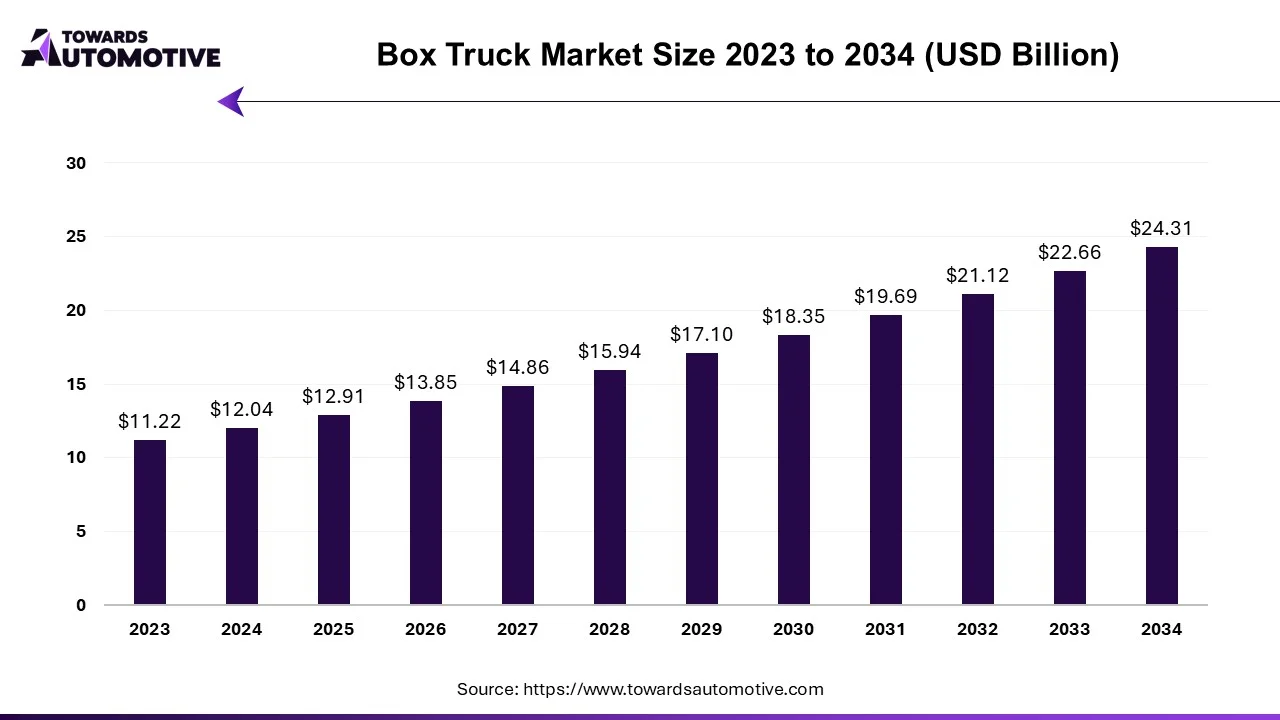
The box truck market is experiencing significant growth, driven by increasing demand for efficient and versatile commercial vehicles for transportation and logistics applications.
Box trucks, also known as cube vans or straight trucks, are versatile commercial vehicles equipped with an enclosed cargo area for transporting goods and materials. These vehicles offer several advantages, including ample cargo space, ease of loading and unloading, and maneuverability in urban environments, making them indispensable for a wide range of businesses and industries.
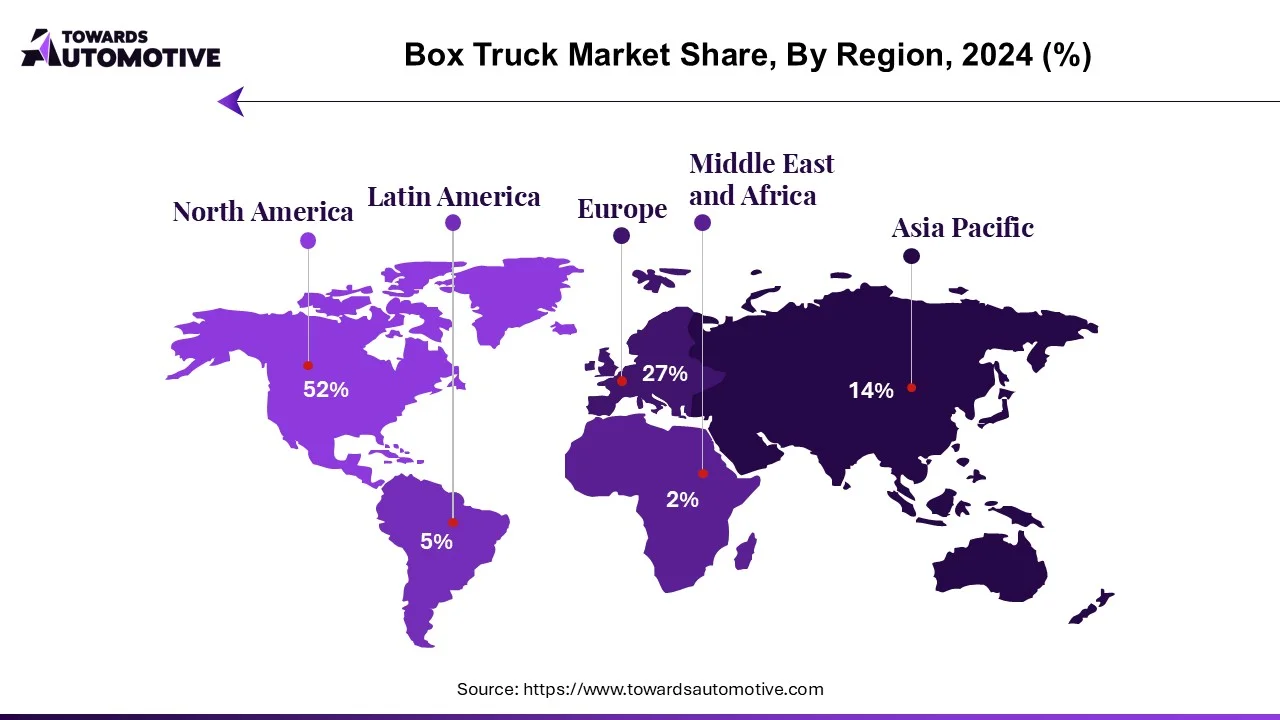
In the bustling landscape of North America's transportation industry, the container truck market is poised to claim a significant portion of revenue, with projections indicating a substantial 24% share by the year 2023. This surge in market share is underpinned by a confluence of factors driving the demand for efficient goods delivery, particularly within major urban centers.
Fueling this growth is the rapid expansion of the economy and the transportation sector, which have catalyzed heightened demand for the swift and reliable delivery of goods to urban hubs. Container trucks emerge as indispensable players in the intricate web of urban logistics, serving as lifelines that ferry goods to businesses, residential enclaves, and sprawling distribution centers with precision and efficiency.
However, the evolving landscape of the container truck market is not solely defined by traditional factors of demand and supply. Rather, it is increasingly shaped by the transformative power of technology, which holds the promise of revolutionizing industry norms and practices. The integration of cutting-edge technology into container trucks heralds a new era characterized by enhanced safety, operational efficiency, and cost-saving opportunities.
Amidst this technological renaissance, manufacturers and logistics organizations across the United States are spearheading pioneering efforts in autonomous driving technology. By embracing autonomous solutions, stakeholders aim to address pressing workforce shortages while simultaneously elevating fleet performance to unprecedented levels of efficacy and reliability.
Moreover, the burgeoning interest in sustainability has emerged as a driving force reshaping the contours of the container truck market. With the meteoric rise of e-commerce and the advent of electric and hybrid propulsion technologies, there is a palpable shift towards more environmentally conscious modes of transportation. This evolving paradigm underscores the imperative for sustainable practices within the industry, propelling innovations that minimize carbon footprints and champion eco-friendly initiatives.
Against this backdrop of dynamic change and innovation, the North American container truck market presents a landscape ripe with promise and potential. As stakeholders navigate the complexities of an ever-evolving industry, the fusion of technological advancement, sustainability imperatives, and burgeoning economic growth sets the stage for a future defined by unprecedented progress and prosperity.
The food truck market is forecast to grow from USD 5.82 billion in 2025 to USD 10.09 billion by 2034, driven by a CAGR of 6.34% from 2025 to 2034. The rapid investment by entrepreneurs to start small food businesses coupled with the increasing demand for medium sized food trucks is playing a vital role in shaping the industry in a positive direction.
Also, the growing popularity of fast-food items among young people aged between 18-33 years along with rise in number of food truck manufacturing companies has contributed to the overall industrial expansion. The rising adoption of electrically-powered food trucks as well as increasing vegan population in western nations is expected to create growth opportunities for the market players in the upcoming years to come.
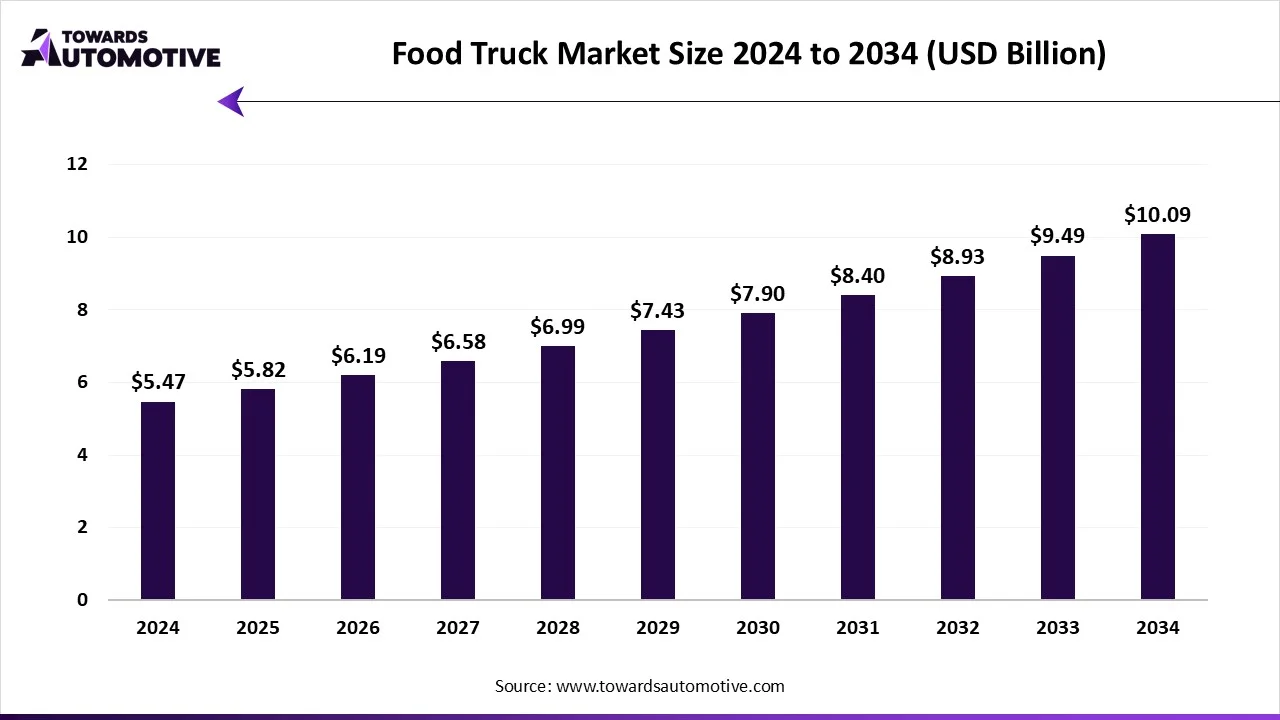
The food truck market is a prominent segment of the automotive industry. This industry deals in manufacturing and distribution of food trucks in different parts of the world. There are several types of food trucks developed in this sector comprising of expandable, boxes, buses & vans, customized trucks and some others. These trucks are available in different sizes in the market including small, medium and large. It is designed to deliver numerous types of food items consisting of barbecue & snacks, fast food, desserts & confectionary, bakery, vegan & meat plant and some others. The growing sales of baked food items in several countries such as the U.S, i has contributed to the overall industrial expansion. This market is expected to rise significantly with the growth of the food and beverage sector around the globe.
The utility trucks market is forecasted to expand from USD 81.3 billion in 2025 to USD 163.99 billion by 2034, growing at a CAGR of 8.04% from 2025 to 2034. The surge in demand for front loader trucks and rear loader trucks from housing societies to dispose garbage has played a vital role in shaping the industry in a positive direction.
Additionally, the rapid urbanization in several developed nations coupled with growing cases of fire incidents is contributing positively to the industrial expansion. The rising need for adoption eco-friendly trucks for enhancing waste management capabilities is expected to create ample growth opportunities for the market players in the upcoming days.
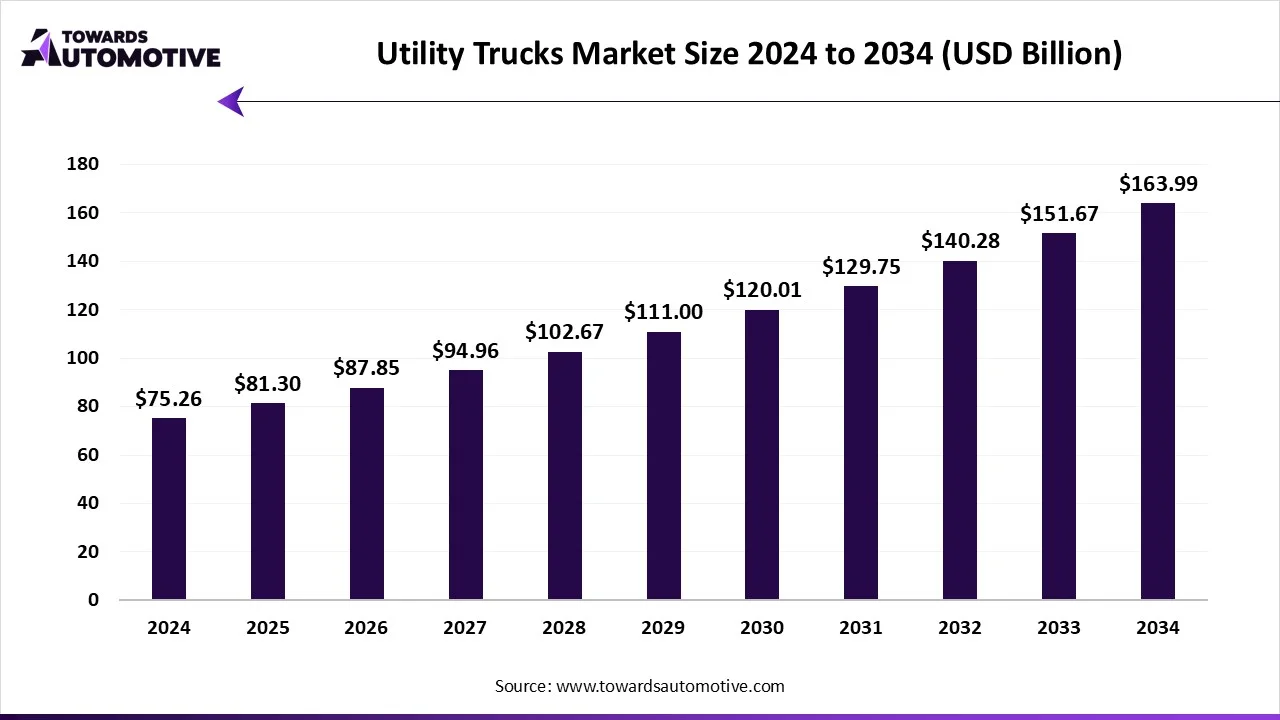
The utility trucks market is a prominent sector of the automotive industry. This industry deals in manufacturing and distribution of utility trucks in different parts of the world. There are several types of trucks developed in this sector comprising of garbage trucks, fire trucks, dump trucks, sweeper trucks and some others. These trucks are powered using different modes of propulsion systems including gasoline, diesel and electric. It comes with numerous payload capacity consisting of light payload, medium payload and heavy payload. The end-user of these trucks comprises of construction, transportation and logistics, utilities, government and services. The growing investment by government for strengthening the municipality sector has contributed to the overall industrial expansion. This market is expected to rise significantly with the growth of the commercial vehicles industry around the globe.
The global military trucks market size to grew to USD 26.58 billion in 2025, and is projected to reach around USD 35.88 billion by 2034. The market is expanding at a CAGR of 3.40% between 2025 and 2034.
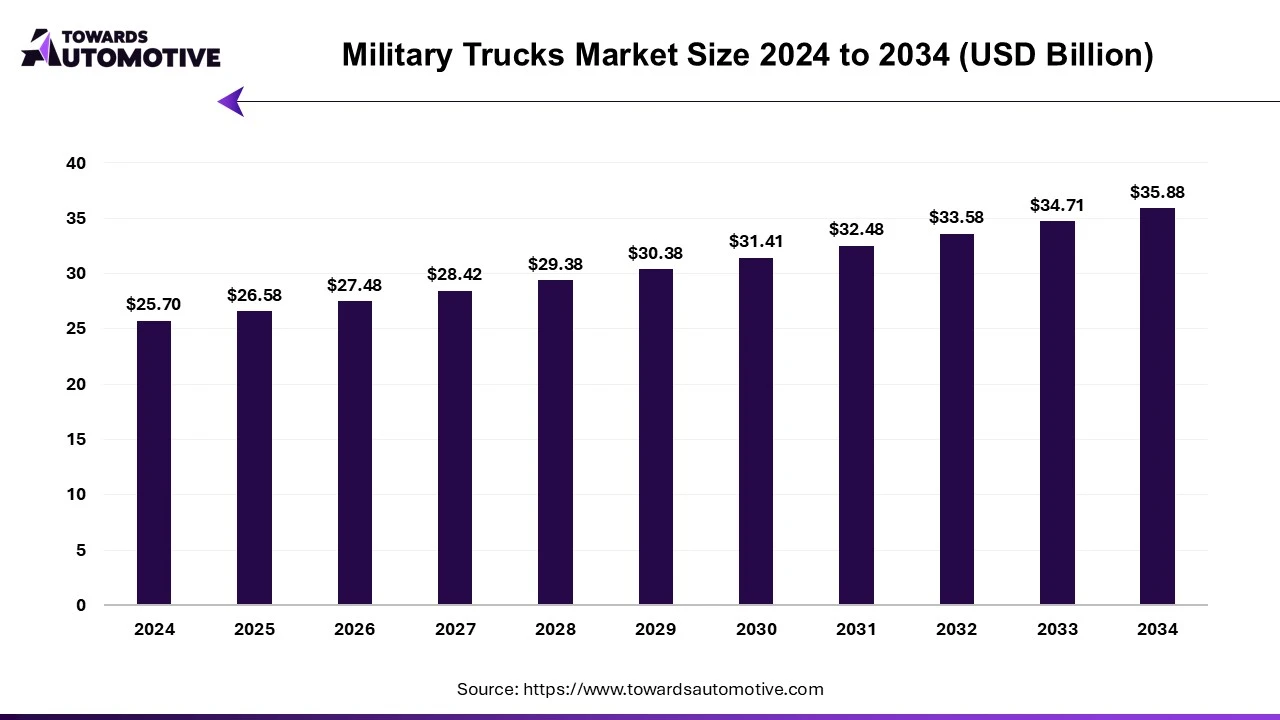
The rising defense expenditure by government of several countries coupled with entry of new startup companies has contributed to the industrial expansion. Additionally, technological advancements in the defense sector along with rapid adoption of driverless trucks in the military sector is playing a vital role in shaping the industry in a positive direction. The research and development activities related to hybrid and electric trucks for the military sector is expected to create ample growth opportunities for the market players in the upcoming years. The military trucks market is a crucial branch of the defense industry. This industry deals in manufacturing and distribution of military trucks in different parts of the world. There are several types of trucks developed in this sector comprising of armored trucks, cargo trucks, personnel carriers, specialized trucks and some others.
The commercial truck market is expected to increase from USD 10.34 billion in 2025 to USD 18.97 billion by 2034, growing at a CAGR of 7.03% throughout the forecast period from 2025 to 2034.
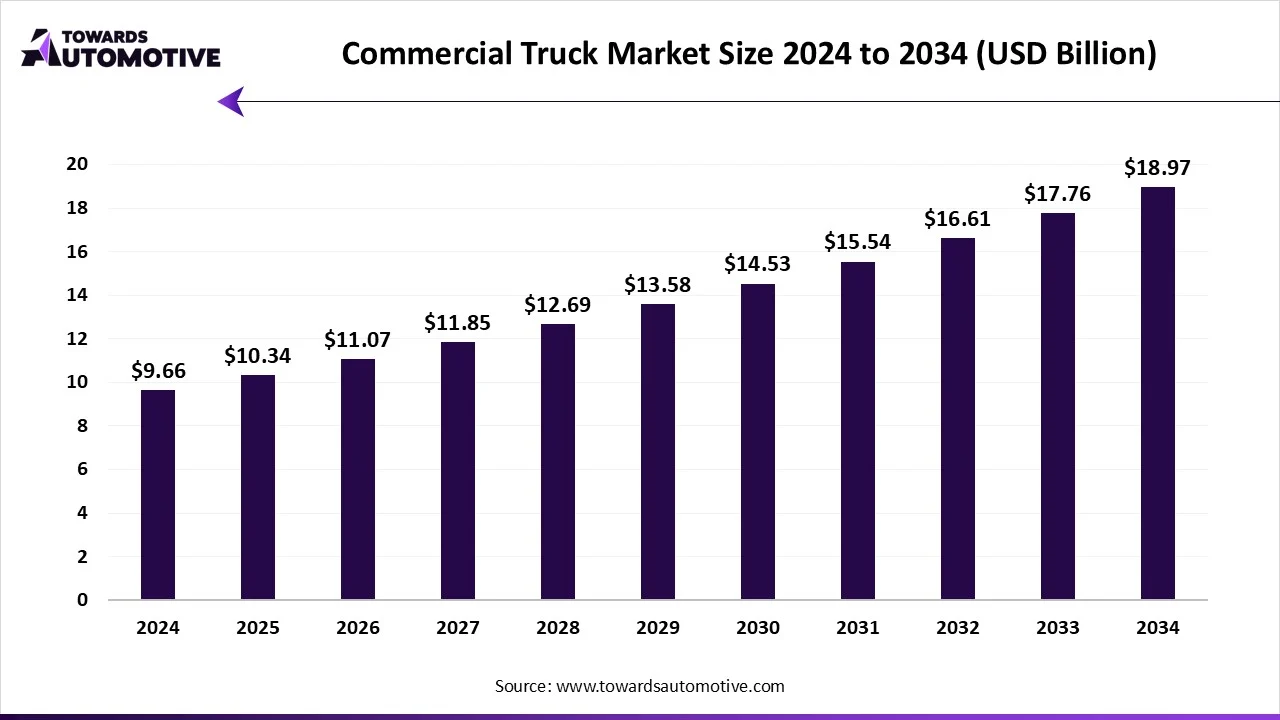
The commercial truck market is a prominent branch of the commercial vehicle industry. This industry deals in manufacturing and distribution of commercial trucks around the world. There are several types of trucks developed in this sector comprising of class 1 trucks, class 2 trucks, class 3 trucks, class 4 trucks, class 5 trucks, class 6 trucks, class 7 trucks, class 8 trucks and some others. These trucks are powered by different types of fuel consisting of diesel, natural gas, hydrogen, electric and some others. It is owned by numerous entities including fleet operator and owner operator. The commercial trucks find applications in various sectors such as freight delivery, utility services, construction & mining and some others. This market is expected to rise significantly with the growth of the automotive sector across the globe.
The recycling trucks market is projected to reach USD 9.40 billion by 2034, growing from USD 6.22 billion in 2025, at a CAGR of 4.70% during the forecast period from 2025 to 2034.
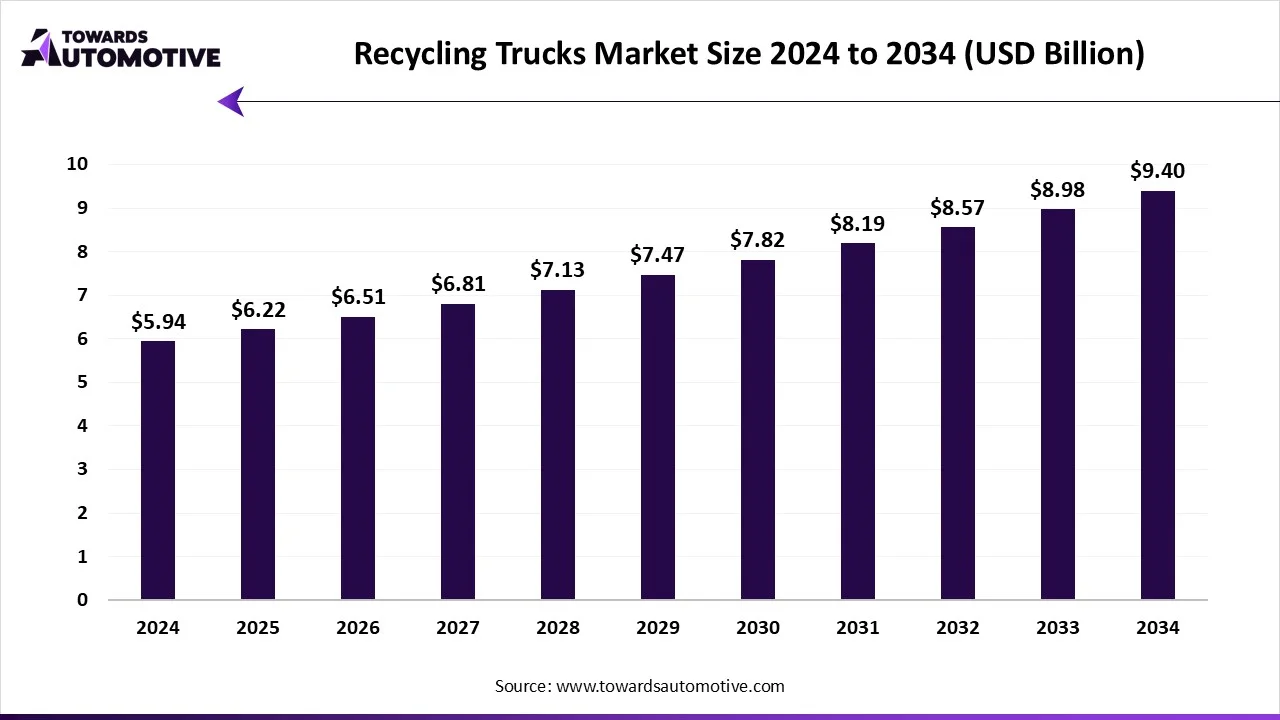
The recycling trucks market is a crucial sector of the automotive industry. This industry deals in manufacturing and distribution of trucks for recycling activities. There are several types of trucks developed in this sector comprising of rear loader trucks, front loader trucks, side loader trucks, multi-compartment trucks and some others. These trucks are powered using different propulsion technology comprising of diesel, natural gas, electric and hybrid. It finds application in various sectors comprising of residential, commercial, industrial and some others. The rising application of recycling trucks for waste management has contributed to the overall market expansion. This market is expected to rise significantly with the growth of the trucking sector in different parts of the world.
By Box Type
By Payload Capacity
By End-Use Industry
By Region
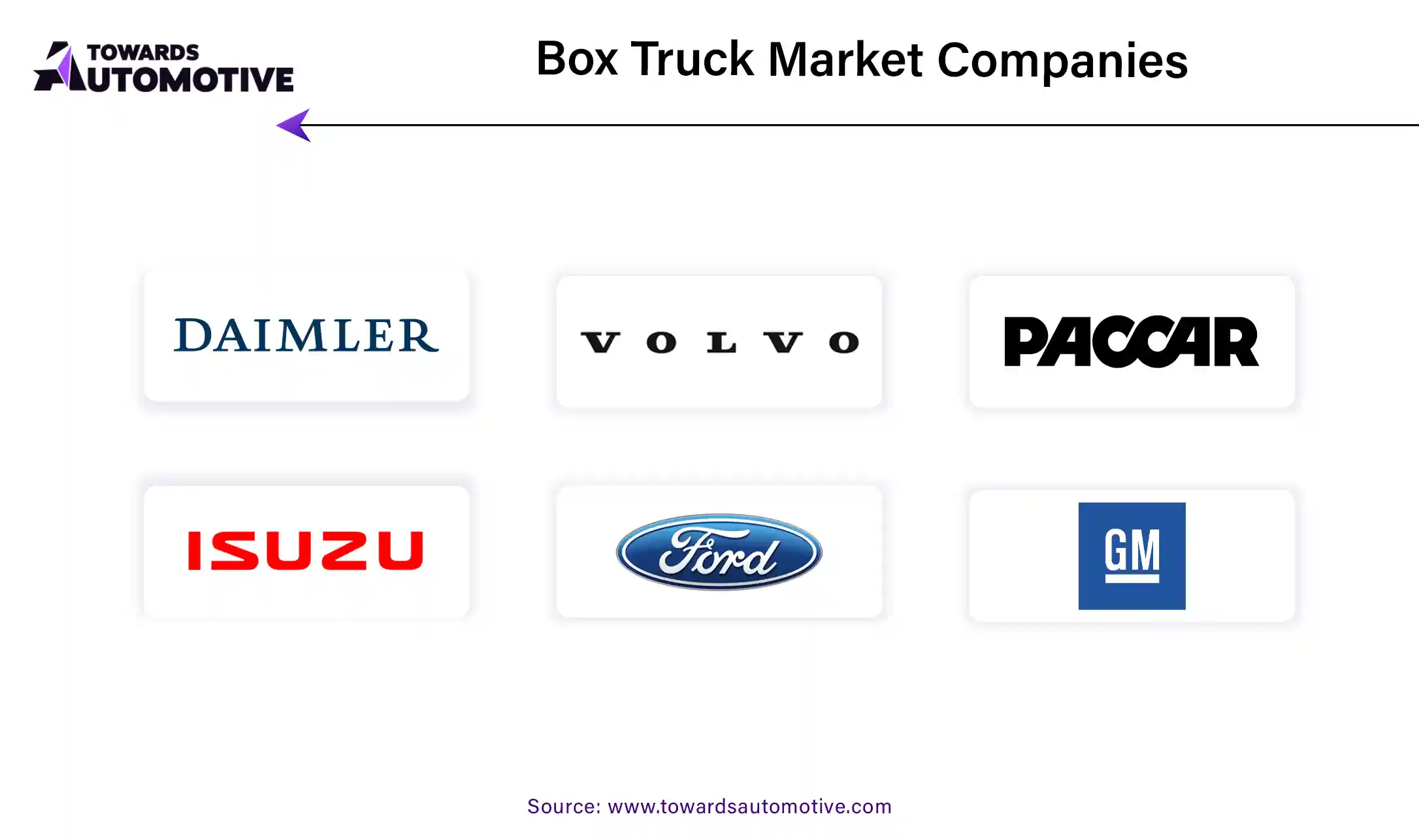
The box truck market comprises a diverse ecosystem of manufacturers, suppliers, fleet operators, and logistics service providers.
Some of the prominent players in the market include:
October 2025
September 2025
October 2025
September 2025
We offer automotive expertise for market projections and customizable research, adaptable to diverse strategic approaches.
Contact Us